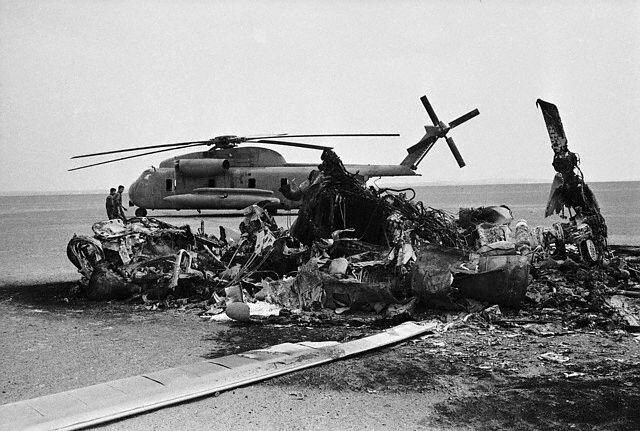Operation Eagle Claw US Army fiasco in Irans Tabas Desert
Operation Eagle Claw: US Army fiasco in Iran’s Tabas Desert
TEHRAN – Forty-five years ago, on April 25, 1980, the United States launched a covert military operation in the northeastern Iranian Tabas desert dubbed Operation Eagle Claw, aimed at airlifting the U.S. embassy personnel who were held in Tehran. But it ended in total failure due to a sandstorm.

The U.S. Embassy staff had been held by Iranian revolutionary students after taking over the Embassy since November 4, 1979, who demanded Washington return the fugitive dictator Mohammad Reza Shah Pahlavi and stop meddling in Iran’s affairs in the post-revolution era.
A few weeks before that, Washington had broken diplomatic relations with Tehran on April 7, 1980, after holding five months of failed negotiations on the matter.
Failure of operation
The operation was conducted by the U.S. Delta Force, but it failed as a sandstorm grounded the forces and their helicopters.
The Delta Force, which was a trained special force, launched the operation following then-U.S. President Jimmy Carter's order. The forces had been under special training exercises for the mission.
The operation was planned to be done in two days. Starting on April 19th, forces were deployed throughout Oman and the Arabian Sea. Three cargo planes and eight helicopters entered Iranian airspace using radar blind spots.
The helicopters and C-130 aircraft were scheduled to meet on the Tabas Desert located in Khorasan province (code-named Desert One), which is located some 200 miles southeast of Tehran. There, the helicopters were supposed to refuel from the C-130s and pick up the commandos. The helicopters would then transport troops to the mountain location from which the actual airlifting mission would be launched the following night. However, the mission turned out to be a humiliating defeat as a sandstorm hit and brought down the group of U.S. military aircraft in the Tabas Desert.
It turned out later that one of the helicopters had crashed into a C-130 Hercules transport plane, and five other choppers were stranded in the sand. The U.S. combat troops had no choice but to abort the mission. Eight of the U.S. commandos were killed at the scene.
According to the American account of the incident, the aircraft encountered a haboob, a violent wind-driven sandstorm common in the desert. This caused extreme visibility issues, damage to the aircraft, and sickness among the crews. President Carter and his staff received the news and decided to abort the mission.
Iranians’ reaction to the news
Iranians believe the sands were the agents of God. The aggressive action was fortunately met with an exemplary failure in the light of divine grace.
The Leader of the Revolution, Imam Khomeini, who had already thrown his weight behind the revolutionary students for taking over the U.S. Embassy, which was suspected of being a “Den of Espionage”, said that Carter had authorized the operation to secure his re-election in the presidential race, which was going to be held later that year in the country.
Imam Khomeini also said that sand particles and strong winds had been assigned by God, the Almighty, to destroy all U.S. war machinery in Tabas.
Many believe the incident played a substantial role in Carter’s defeat in the 1980 presidential election. Carter's national security advisor, Zbigniew Brzezinski, later confirmed that his boss had authorized the failed operation, blaming the fiasco for his boss’s defeat in the elections, as it had sparked frustration in the American voters.
On the anniversary of the fiasco, Iran reminds the United States of its humiliating defeat in its aggression on its territorial integrity, advising Washington to learn lessons. Tehran also calls for an end to more than four decades of hostility toward the resistant Iranian nation.
It is noteworthy, Iran has grown much stronger now compared to the early years after the 1979 Islamic Revolution. It has rendered American sanctions and threats ineffective.
Deemed as a huge blow to the U.S. military, Observers argue that the Eagle Claw Operation serves as a warning for President Donald Trump not to initiate a war.
source: tehrantimes.com